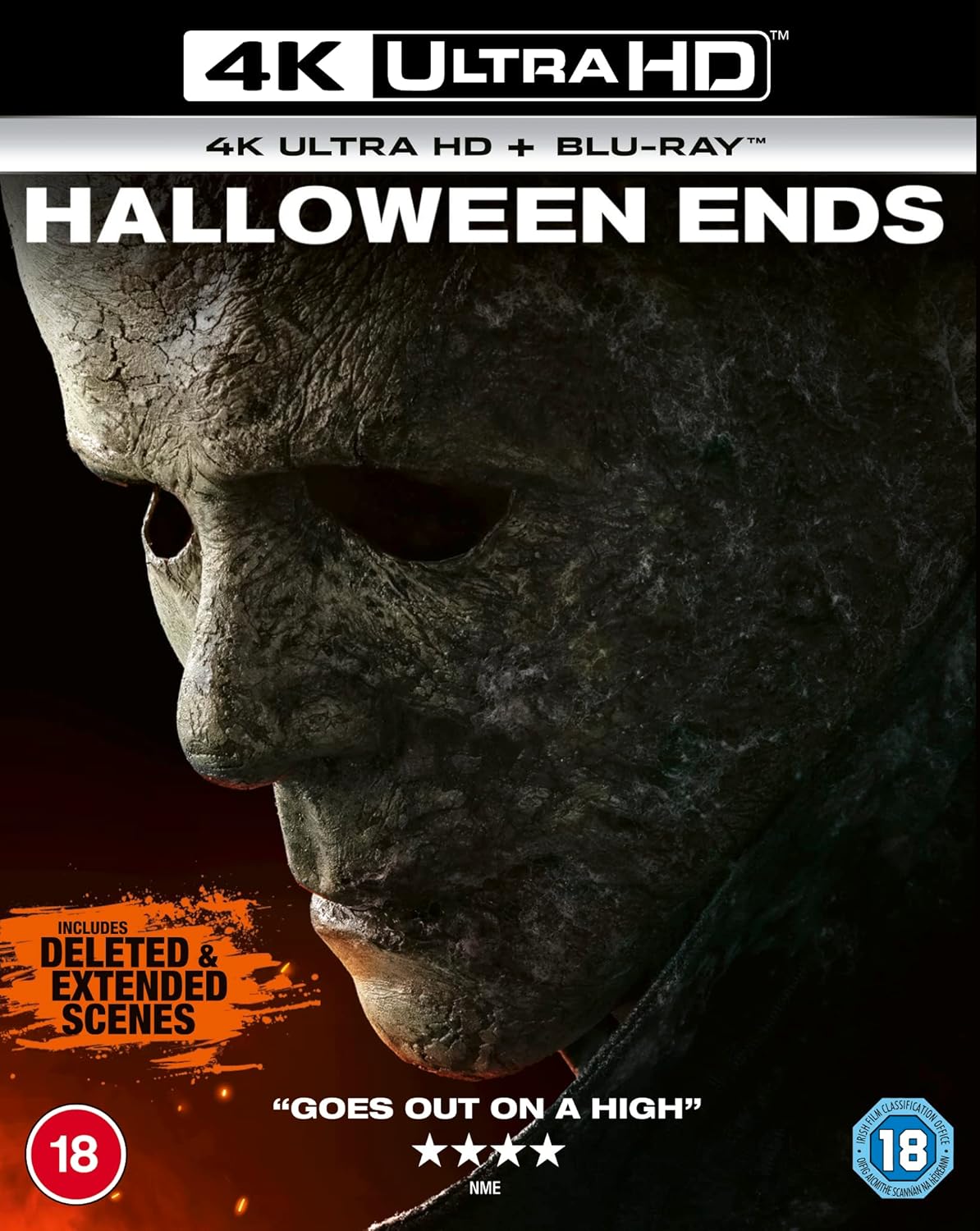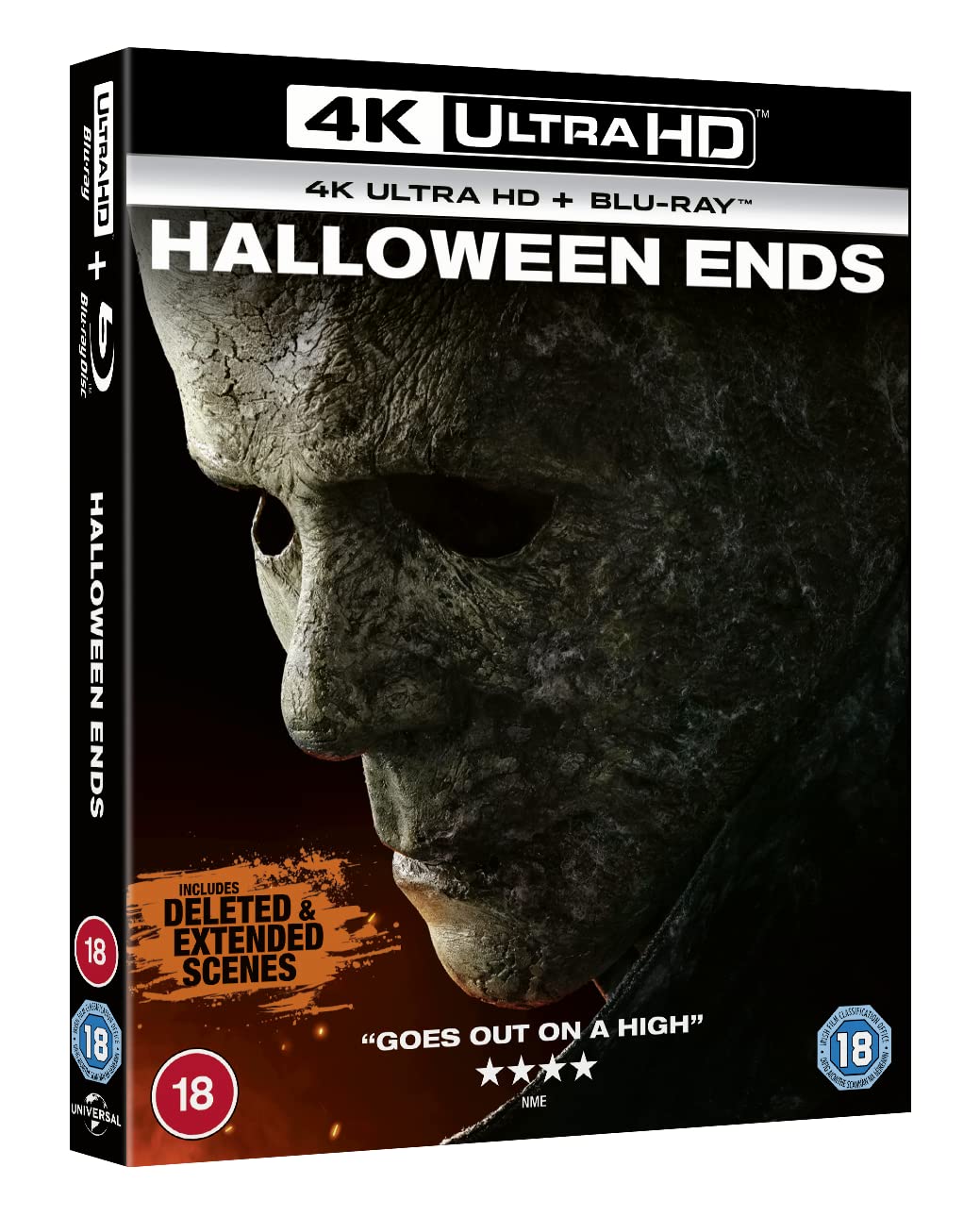
Halloween Ends Review Halloween Ends – Oemiu
Halloween Ends Review: A Final Chapter or a Missed Opportunity?
The night he came home… again. And again. For over four decades, Michael Myers has stalked Haddonfield, etching himself into the collective consciousness as the embodiment of pure, unadulterated evil. With David Gordon Green’s trilogy, beginning with the 2018 reboot, fans hoped for a definitive and satisfying conclusion to the saga of Laurie Strode and the Shape. After the divisive reception to Halloween Kills, all eyes were on Halloween Ends to deliver on that promise. The marketing campaign was intense, teasing a showdown unlike any other, and hinting at a final confrontation that would leave audiences breathless. But did it live up to the hype? Did Halloween Ends truly provide a fitting end to the Halloween franchise, or did it stumble on the finish line?
A Departure From Expectations
Halloween Ends immediately throws audiences for a loop. Instead of diving straight into the relentless carnage we’ve come to expect, the film takes a bold, arguably risky, detour. We are introduced to Corey Cunningham, a young man working as a babysitter on Halloween night in 2019. In a tragic accident, the child he is watching dies, and Corey is branded a “psycho” by the town, becoming a social outcast subjected to constant harassment. This storyline, focusing on Corey’s descent into darkness and his eventual connection to Michael Myers, occupies a significant portion of the film’s runtime. While some viewers might appreciate this attempt to explore the nature of evil and its potential to corrupt individuals beyond Michael Myers, others may find it a jarring departure from the core narrative of Laurie and Michael. The film spends a considerable amount of time developing Corey’s character and exploring his internal struggles, potentially at the expense of the iconic Laurie Strode/Michael Myers dynamic that has been the bedrock of the franchise. This shift in focus is one of the most controversial aspects of Halloween Ends, with many fans feeling that it dilutes the central conflict and diminishes the importance of the series’ established characters. Is the film trying to tell us that anyone can become the boogeyman, given the right (or wrong) circumstances? Or is it simply a narrative misstep that detracts from the climactic battle we’ve been waiting for?
The thematic exploration of evil as a contagion, spreading and infecting those vulnerable to its influence, is certainly an interesting concept. However, its execution in Halloween Ends feels somewhat disjointed. Corey’s transformation feels rushed and, at times, unconvincing. The film struggles to convincingly portray the gradual corruption of his character, leading to accusations that his descent into violence feels forced and inorganic. Furthermore, the connection between Corey and Michael Myers, while integral to the plot, feels underdeveloped. The film hints at a symbiotic relationship between the two, with Corey somehow drawing power from the dormant evil residing within Michael. However, the specifics of this connection are left largely unexplored, leaving audiences with more questions than answers. Ultimately, the film’s exploration of evil as a force capable of corrupting individuals feels muddled and lacking in depth, leaving many viewers questioning the film’s narrative choices.
The Curious Case of Corey Cunningham
Corey Cunningham, portrayed by Rohan Campbell, is undeniably a bold addition to the Halloween mythology. He’s not just another victim or a red herring; he’s a central figure whose arc dramatically shapes the events of Halloween Ends. However, his inclusion raises a crucial question: does he truly belong in a Halloween movie? While the concept of exploring the transfer of evil from Michael to Corey is intriguing, the execution falters. Campbell delivers a commendable performance, but the writing doesn’t fully support the weight of his character’s transformation. His descent into darkness feels rushed, almost as if the film is trying to condense years of psychological trauma into a few pivotal scenes. This makes it difficult to fully invest in his journey and understand his motivations. Furthermore, the film’s decision to allocate a significant portion of its runtime to Corey’s storyline inevitably detracts from the established narrative involving Laurie and Michael. Fans who were expecting a final, epic showdown between these two iconic characters may feel shortchanged by the film’s detour into Corey’s troubled world.
The audience’s reaction to Corey Cunningham is a microcosm of the overall divided response to Halloween Ends. Some see him as a fascinating addition, a symbol of the insidious nature of evil and its ability to corrupt even the seemingly innocent. Others view him as an unwelcome distraction, a narrative detour that undermines the legacy of the franchise. Regardless of one’s perspective, it’s undeniable that Corey Cunningham is a controversial and polarizing figure in the Halloween universe. He represents the film’s willingness to take risks and challenge expectations, but also its potential to alienate long-time fans who were hoping for a more straightforward conclusion to the Michael Myers saga. It might have been more compelling if the film explored the psychological impact of Michael’s terror on the entire community, creating a breeding ground for future evil, without resorting to a direct “transfer” of power.
Laurie Strode: Survivor or Spectator?
Laurie Strode, played once again by the legendary Jamie Lee Curtis, has always been the heart and soul of the Halloween franchise. From her initial role as a terrified babysitter in the original 1978 film to her transformation into a hardened survivalist in the later installments, Laurie has embodied the resilience and strength of the human spirit in the face of unspeakable evil. However, in Halloween Ends, Laurie’s role feels somewhat diminished. While she is still present and plays a significant part in the overall narrative, her involvement in the central conflict feels less active than in previous films. She spends a considerable amount of time focused on writing her memoir and attempting to heal from the trauma of the past, which, while understandable, makes her feel more like an observer than a direct participant in the events unfolding around her. Her confrontations with Michael are fewer and farther between, and her overall presence in the film feels less impactful than one might expect from the protagonist of a saga spanning over four decades.
While Laurie’s reduced role may disappoint some fans, it’s important to consider the thematic implications of this choice. Halloween Ends explores the idea of moving on from trauma and finding closure after years of suffering. By focusing on Laurie’s attempts to heal and rebuild her life, the film suggests that it is possible to overcome even the most horrific experiences. However, this thematic exploration comes at a cost. Laurie’s character feels less proactive and less directly involved in the fight against Michael Myers. She becomes more of a symbol of hope and resilience than a warrior battling the embodiment of evil. This shift in focus may resonate with some viewers who appreciate the film’s attempt to explore the psychological impact of trauma, but it may also alienate those who were hoping for a more action-packed and confrontational final chapter in Laurie’s story. Ultimately, Laurie’s role in Halloween Ends is a complex and nuanced one, reflecting the film’s overall attempt to subvert expectations and explore new thematic territory. Laurie’s scenes with her granddaughter, Allyson, provide some of the most touching moments in the film, underscoring the importance of family and connection in the face of tragedy.
The Final Showdown?
The climactic confrontation between Laurie Strode and Michael Myers is undoubtedly one of the most anticipated aspects of Halloween Ends. After decades of cat-and-mouse games, near-death experiences, and countless sequels, fans were eager to witness a final, definitive battle between these two iconic figures. However, the actual showdown in Halloween Ends proves to be surprisingly brief and, arguably, anticlimactic. While the fight is certainly intense and brutal, it lacks the emotional weight and epic scale that many viewers were expecting. The confrontation feels rushed, almost as if the film is eager to wrap things up and move on to its conclusion. Furthermore, the circumstances surrounding Michael’s final defeat may leave some fans feeling unsatisfied. The manner in which he is ultimately dispatched feels somewhat undignified, failing to provide a sense of closure or resolution to his reign of terror. The final scene, involving the destruction of Michael’s body, is visually striking but emotionally underwhelming. It feels more like a symbolic act than a genuine culmination of the decades-long conflict between Laurie and Michael. The film spends a lot of time on Corey and relatively little on the actual “end” of Michael Myers.
Many had hoped for a more elaborate and emotionally resonant confrontation. The showdown we received felt more like a struggle, and less like a symbolic battle between good and evil. This is arguably a deliberate choice on the part of the filmmakers, reflecting the film’s overall attempt to subvert expectations and challenge genre conventions. By avoiding a grandiose and overly dramatic finale, Halloween Ends seeks to offer a more grounded and realistic portrayal of the aftermath of trauma. However, this approach may leave some viewers feeling disappointed, particularly those who were expecting a more traditional and satisfying conclusion to the Michael Myers saga. It’s safe to say that many fans have mixed feelings about the overall impact of Halloween Ends with the absence of the traditional slasher elements that made the franchise popular. Is it a new chapter, or a detour from the road we expected?
Technical Aspects and Production
From a technical standpoint, Halloween Ends is a well-crafted film. The cinematography is visually striking, utilizing a variety of camera angles and lighting techniques to create a sense of dread and suspense. The film’s score, composed by John Carpenter, Cody Carpenter, and Daniel Davies, is effectively atmospheric, enhancing the tension and complementing the on-screen action. The sound design is also noteworthy, with sharp and unsettling sounds that contribute to the overall sense of unease. However, these technical merits are not enough to overcome the film’s narrative shortcomings. Even the most beautiful cinematography and the most chilling score cannot compensate for a weak plot or unconvincing character development. While Halloween Ends may be technically proficient, it ultimately fails to deliver a satisfying and coherent story. The pacing is inconsistent, with long stretches of exposition followed by brief bursts of action. The editing feels choppy at times, disrupting the flow of the narrative. And the overall tone of the film is uneven, oscillating between moments of genuine terror and scenes that feel out of place and tonally dissonant.
The production design of Halloween Ends is also a mixed bag. While the film effectively recreates the familiar setting of Haddonfield, it fails to introduce any new or memorable visual elements. The sets and costumes are functional but unremarkable, lacking the distinct personality and atmosphere of previous installments in the franchise. Even Michael Myers’ iconic mask feels slightly different, lacking the same sense of menace and dread that it has exuded in the past. Overall, the technical aspects and production design of Halloween Ends are competent but uninspired. The film lacks the visual flair and technical innovation that could have elevated it above its narrative shortcomings. It’s a technically proficient film, but it lacks the artistic vision and creative spark that would have made it a truly memorable conclusion to the Halloween saga. The absence of innovative practical effects is also noticeable. While CGI is used effectively in some scenes, it lacks the visceral impact and realism of practical effects, further detracting from the overall sense of terror.
Below is a table comparing the director and distributor across the David Gordon Green Halloween trilogy:
| Film Title | Director | Distributor |
|---|---|---|
| Halloween (2018) | David Gordon Green | Universal Pictures |
| Halloween Kills (2021) | David Gordon Green | Universal Pictures |
| Halloween Ends (2022) | David Gordon Green | Universal Pictures |
Final Verdict: A Divisive Conclusion
Halloween Ends is a film that is likely to divide audiences. Its bold narrative choices, its unconventional structure, and its thematic explorations will resonate with some viewers, while alienating others. Those who are willing to embrace the film’s departure from traditional slasher conventions may find it to be a thought-provoking and emotionally resonant conclusion to the Halloween saga. They may appreciate its exploration of trauma, its examination of the nature of evil, and its attempt to offer a message of hope and resilience. However, those who were expecting a more straightforward and action-packed finale may be disappointed. They may find the film’s pacing to be slow, its plot to be convoluted, and its climactic confrontation to be anticlimactic. They may feel that the film fails to deliver on the promise of a definitive and satisfying conclusion to the Michael Myers saga. Ultimately, Halloween Ends is a film that must be judged on its own terms. It is not a perfect film, and it certainly has its flaws. But it is also a film that is willing to take risks and challenge expectations. Whether those risks pay off is ultimately a matter of personal opinion. It might leave a lasting impression, but is that a good thing? The answer might depend on your openness to change. For some, the Halloween legacy might have truly ended with Halloween Ends, but it might be too soon to tell.
In conclusion, Halloween Ends is a complex and controversial film that is sure to spark debate among fans of the franchise. While it may not satisfy everyone’s expectations, it is a film that is worth watching and discussing. Its bold narrative choices and thematic explorations make it a unique and memorable entry in the Halloween canon. Whether you love it or hate it, there’s no denying that Halloween Ends is a film that will leave a lasting impression. Its legacy will be debated for years to come, as fans grapple with its unconventional structure, its controversial character choices, and its ambiguous ending.
FAQ
Was Halloween Ends a good ending to the franchise?
The quality of Halloween Ends as a finale is subjective and highly debated. Many fans found the film’s focus on Corey Cunningham and its departure from the traditional Michael Myers slasher formula disappointing. They argue that it failed to provide a satisfying resolution to the Laurie Strode/Michael Myers conflict and that the climactic confrontation felt anticlimactic. Other viewers, however, appreciated the film’s thematic exploration of trauma, its attempt to subvert expectations, and its willingness to take risks. They argue that it offered a more nuanced and emotionally resonant conclusion to the saga, even if it wasn’t the ending they were expecting. Ultimately, whether Halloween Ends is a “good” ending depends on individual expectations and preferences.
Why was Corey Cunningham such a big part of Halloween Ends?
Corey Cunningham’s prominent role in Halloween Ends was a deliberate choice by the filmmakers to explore the nature of evil and its potential to spread and corrupt individuals. Corey represents the idea that evil is not confined to Michael Myers alone, but can manifest in ordinary people who are vulnerable to its influence. By focusing on Corey’s descent into darkness, the film seeks to examine the psychological impact of trauma, the dangers of social ostracism, and the seductive allure of violence. While some viewers found Corey’s storyline to be a compelling and thought-provoking addition to the Halloween mythology, others felt that it detracted from the established narrative and diminished the importance of the Laurie Strode/Michael Myers dynamic.
How did Halloween Ends connect to the other films in the trilogy?
Halloween Ends is the third and final installment in David Gordon Green’s Halloween trilogy, which began with the 2018 reboot and continued with Halloween Kills. The film directly follows the events of Halloween Kills, which depicted the aftermath of Michael Myers’ escape from Laurie Strode’s burning house and his subsequent rampage through Haddonfield. Halloween Ends picks up four years later, with Laurie attempting to heal from her trauma and Corey Cunningham struggling to cope with the accidental death of the child he was babysitting. While Halloween Ends is connected to the other films in the trilogy through its characters and its setting, it also represents a significant departure in terms of its narrative focus and its thematic explorations.
Did Jamie Lee Curtis like Halloween Ends?
Jamie Lee Curtis has publicly expressed mixed feelings about Halloween Ends. While she has praised the film’s exploration of trauma and its attempt to offer a message of hope and resilience, she has also acknowledged that it is a divisive film that is likely to polarize audiences. In interviews, Curtis has emphasized that she is proud of the work she did on Halloween Ends and that she believes it is a fitting conclusion to Laurie Strode’s story. However, she has also acknowledged that not everyone will agree with the film’s narrative choices and that some fans may be disappointed by its ending. Ultimately, Curtis’s perspective on Halloween Ends is complex and nuanced, reflecting the film’s own ambiguity and its willingness to challenge expectations.
Why was Michael Myers barely in Halloween Ends?
The limited screen time for Michael Myers in Halloween Ends was a deliberate choice by the filmmakers to subvert expectations and explore new thematic territory. Instead of focusing solely on Michael’s reign of terror, the film chose to examine the psychological impact of his actions on the community of Haddonfield and to explore the potential for evil to manifest in other individuals. By shifting the focus away from Michael and towards Corey Cunningham, the film sought to challenge the audience’s assumptions about the nature of evil and to suggest that anyone can become the boogeyman, given the right (or wrong) circumstances. While this decision proved controversial among some fans, it was a key element of the film’s overall vision.
Was Halloween Ends a box office success?
Despite the mixed critical reception, Halloween Ends was a moderate box office success. The film grossed over $100 million worldwide on a budget of approximately $30 million, making it a profitable venture for Universal Pictures. However, its box office performance was lower than that of its predecessors, Halloween (2018) and Halloween Kills, which suggests that the negative reviews may have impacted its overall earning potential. The film’s simultaneous release on Peacock, NBCUniversal’s streaming service, may have also contributed to its lower box office numbers, as some viewers may have chosen to watch it at home rather than in theaters.
What is the future of the Halloween franchise after Halloween Ends?
The future of the Halloween franchise after Halloween Ends remains uncertain. While the film was marketed as the “final” chapter in the saga, the history of the Halloween franchise suggests that it is unlikely to remain dormant forever. The rights to the Halloween franchise are currently owned by Miramax, and it is possible that the studio will eventually choose to reboot the series or to produce a new set of sequels with a different creative team. However, any future Halloween films would likely have to address the events of Halloween Ends, which depicted the definitive death of Michael Myers. Whether future installments will follow on from what went before or not remains to be seen. The ending of Halloween Ends with Michael’s mask being left on the table perhaps leaves the door open to a sequel, remake or a brand new story altogether.








